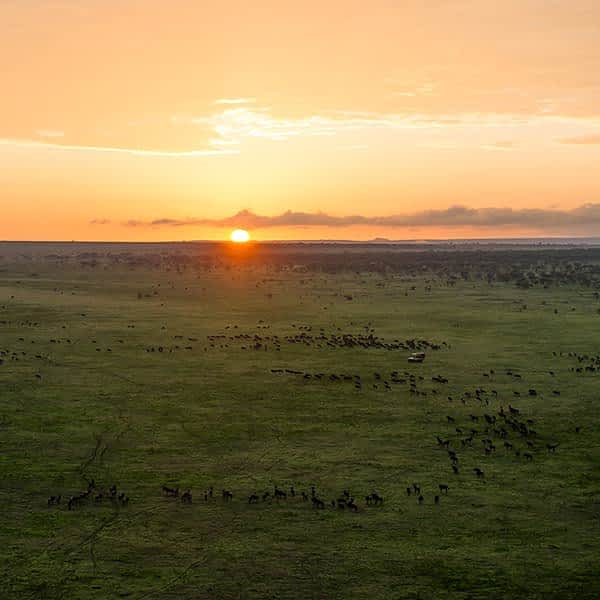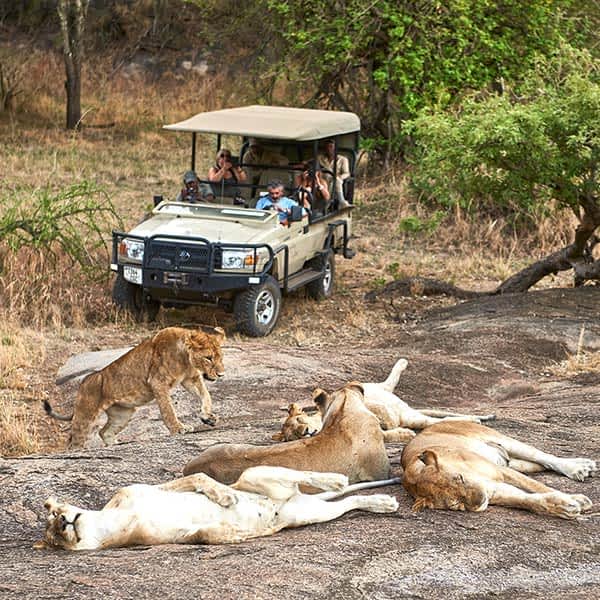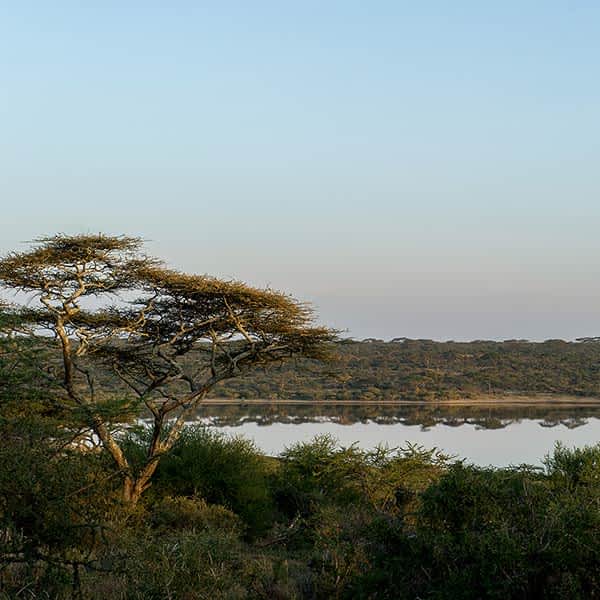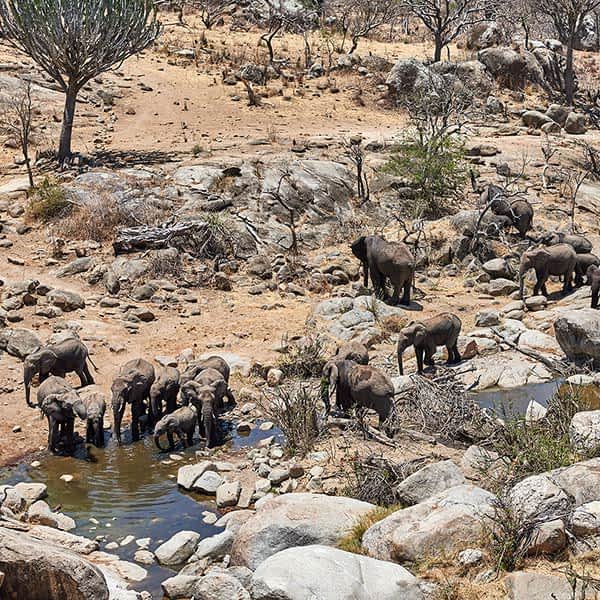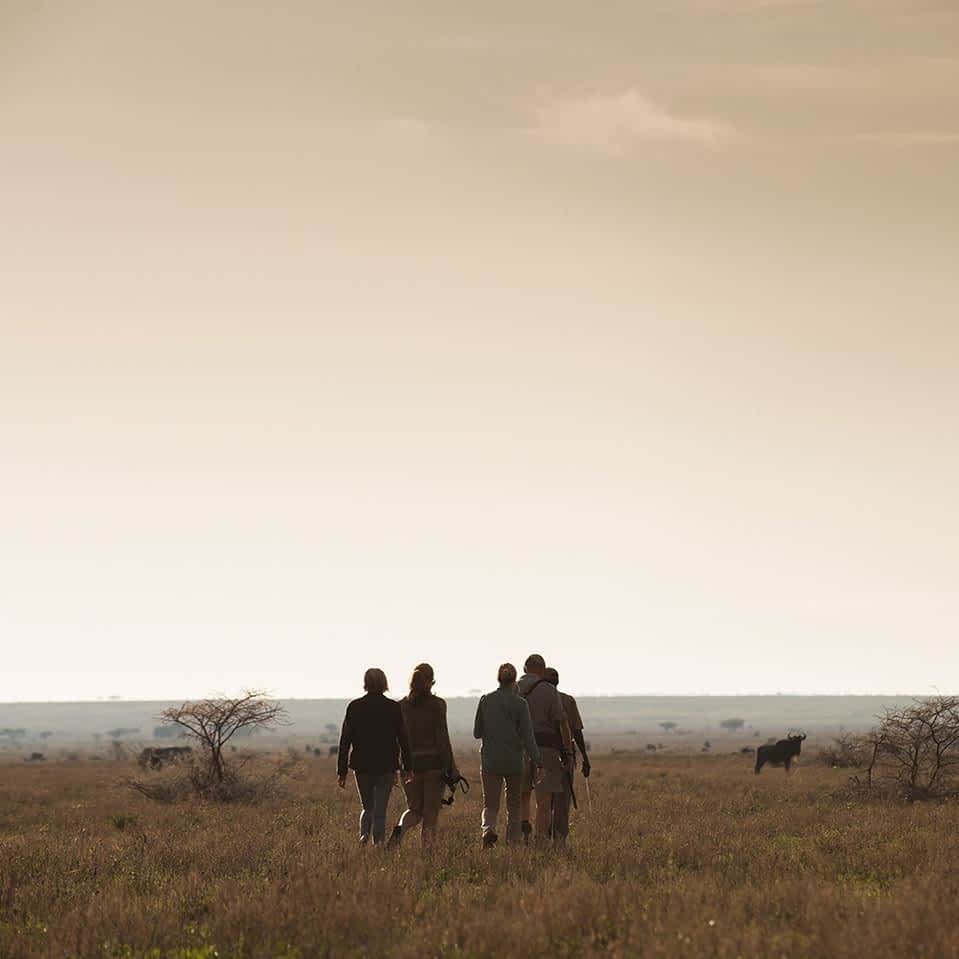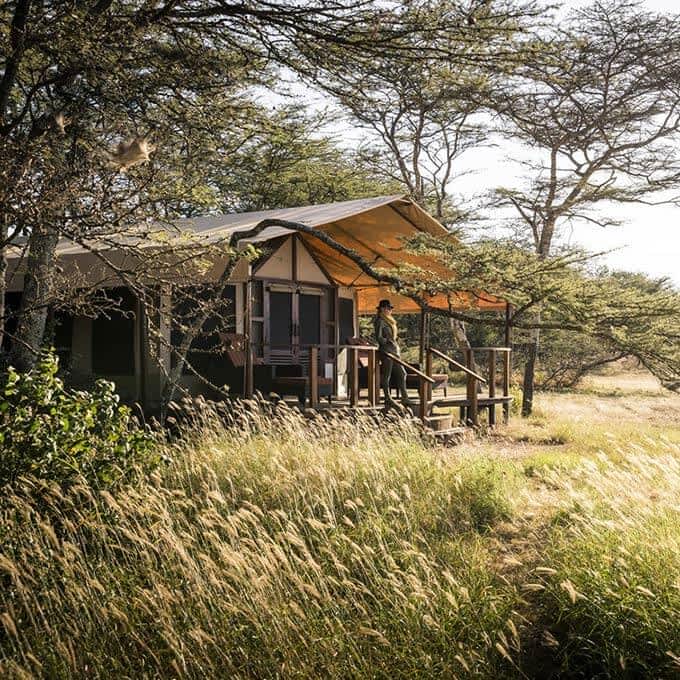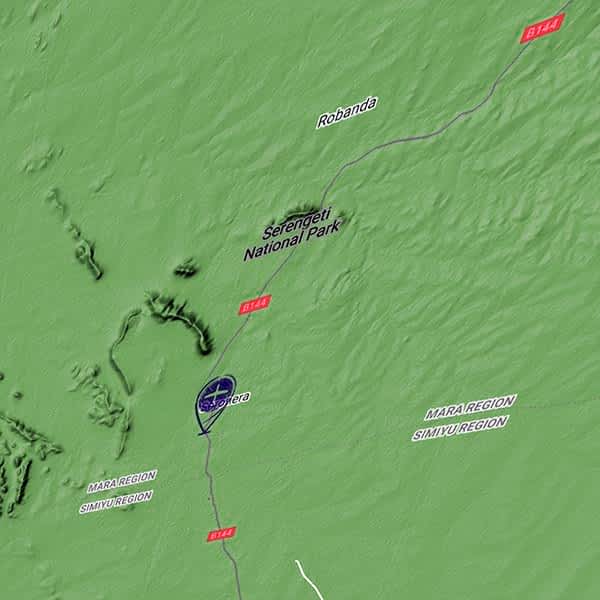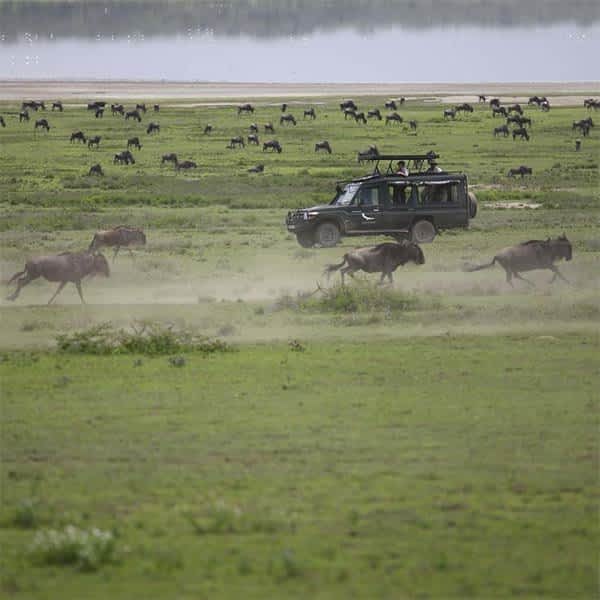Abouth southeastern plains & Ndutu
The southeastern portion of Serengeti is teeming with wildlife year round, but the peak in terms of wildlife density is between December and April. Giant herds of wildebeest and zebra are attracted by the seasonal rains pouring down. In this period the best area to see wildlife is around Lake Ndutu, in the heart of the wildebeest gathering. This is where female wildebeest give birth to countless calves and therefore makes up one of the highlight of the Great Migration. All these young herbivores serve as a magnet to predators with the result of southeastern Serengeti becoming the dramatic scene of new life, and death. The vachellia woodlands surrounding the lakes provide shelter to a range of birds not to be found elsewhere in the Serengeti. Stay alert and you may spot a fantastically coloured Fischer's lovebird. With all the action concentrating in this area it is important to point out that the phenomenon attracts, besides predators, a lot of visitors, resulting in high vehicle traffic. The December to March period also implies that it may rain significantly.
Low season paradise
After all the action has moved to greener pastures, the area experiences a much quieter season, between April and November. The southeastern plains and Ndutu become a tranquil place where other visitors are scarce but wildlife remains abundant. This is an excellent time to visit and stay here. Between April and November the southeastern plains dry out, turning the landscape into a thinly vegetated area. Two lakes support scores of wildlife: the perennial Masek Lake in the Ngorongoro Crater Area and the seasonal Ndutu Lake.
Wildlife viewing southeastern plains
The southeastern plains are dotted with several clusters of koppies (or kopjes). Kopjes form a microhabitat inhabited by non-plains wildlife such as rock hyrax, klipspringer, leopard and various cliff-nesting raptors. Lions use kopjes as shelter or as vantage point enabling to survey the surrounding plains. As the name suggests, Simba Koppies, on the main road between Seronera and the Ngorongoro Crater Area is good for lion sightings. The grasslands around the more easterly Gol Koppies is excellent for both cheetah and lion. Although trees flourish on the sides of koppies, a striking feature of the surrounding plains is its lack of trees altogether. The explanation for this feature is that the volcanic soil is too hard for roots to penetrate. Also see: why are there no trees on the plains?
Further reading

